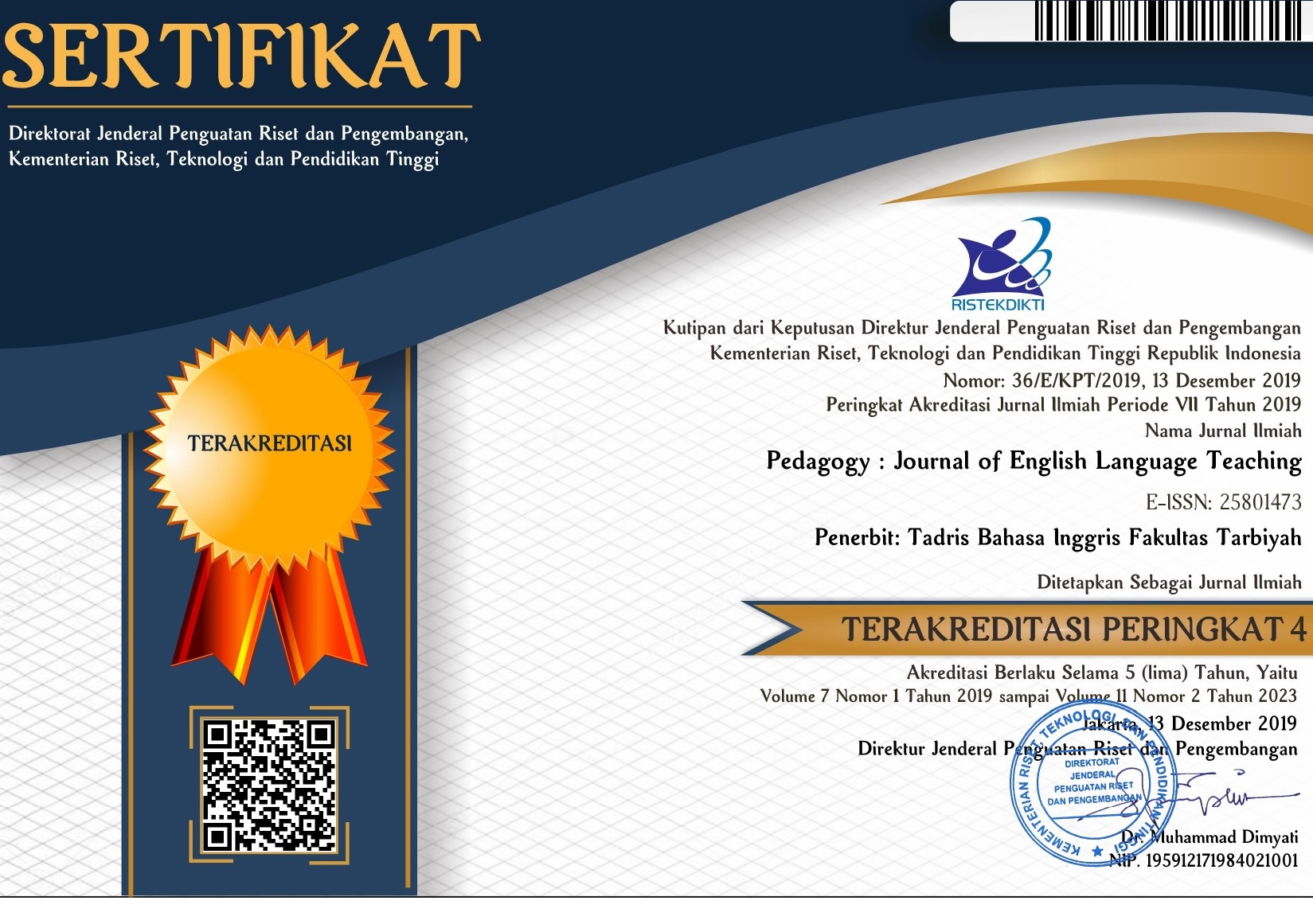E-Learning-mediated Instruction: Preparing Innovative and Work Ready English Materials for Nursing Assistant Students
DOI:
https://doi.org/10.32332/pedagogy.v8i2.2037Abstract
This study aimed at developing e-learning-based English materials for Nursing Assistant students by employing Lee and Owen's R&D design model. The R&D model consists of need analysis, design, and development. The need analysis was conducted in a vocational school in North Bali, Indonesia, to gather suitable information from the stakeholders. The data were from observation, recording, interview, and expert judgment analyzed both qualitatively and quantitatively. Results showed that Nursing assistant students needed specific English materials related to their future jobs. The designed materials comprised five units: General Assessment, Handling Patients, Patient's Hygiene, Checking Vital Signs, and Dimensions of Symptom. Using the criteria of good ESP material and good e-learning material, the developed materials are found to be in the excellent category. The study shows that Nursing assistant students need innovative and work-relevant materials. It is highly recommended to be utilized in the teaching and learning process.
















